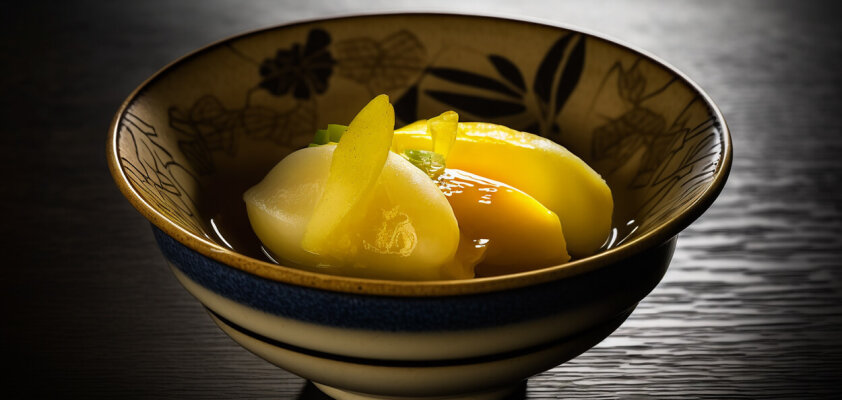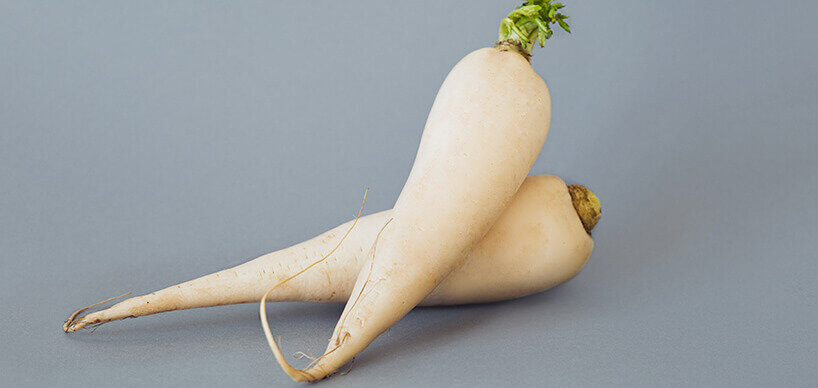Typically Japanese: pickled radish

The golden yellow delicacy
Japanese-style pickled radish
 4 personsNo. of persons
4 personsNo. of persons
 ca. 25 minutes Preparation time
ca. 25 minutes Preparation time
 ca. 48 hoursTotal Time
ca. 48 hoursTotal Time
 easyLevel of difficulty
easyLevel of difficulty
 SupplementDish
SupplementDish
 200kcalCalories
200kcalCalories
 Vegetarian
Vegetarian
 Lactose-free
Lactose-free


 a little bit spicy
a little bit spicy
 Kitchenware
Kitchenware

|
500g
Radish (preferably daikon radish)
|
|
30g
Mustard seeds
|
|
150g
Sugar
|
|
20g
Salt
|
|
50g
Ginger
|
|
150ml
Rice vinegar (white vinegar)
|
|
150ml
Apple cider vinegar
|
|
300ml
water
|
|
1
fresh chili pepper as required
|
|
1teaspoon
Ground turmeric for the color
|

Variant 2 - the quick variant
Follow steps 1-3 as per the above instructions. Then, place the radish pieces into canning jars and wait until the brine has completely cooled. Only then, fill the canning jars with the brine. Place the jars in the refrigerator and let them marinate for 2 days. The radish can be used as a side dish for grilled meat, in salads, or as a sushi filling. Enjoy your meal!
Tip: The base for pickled radish always includes rice vinegar (white vinegar) and sugar. The remaining ingredients can vary according to taste. This means that bay leaves, juniper, dill, peppercorns, or other spices can be added to the brine.











-from-the-yakiyaki-grill-pan.jpg)




